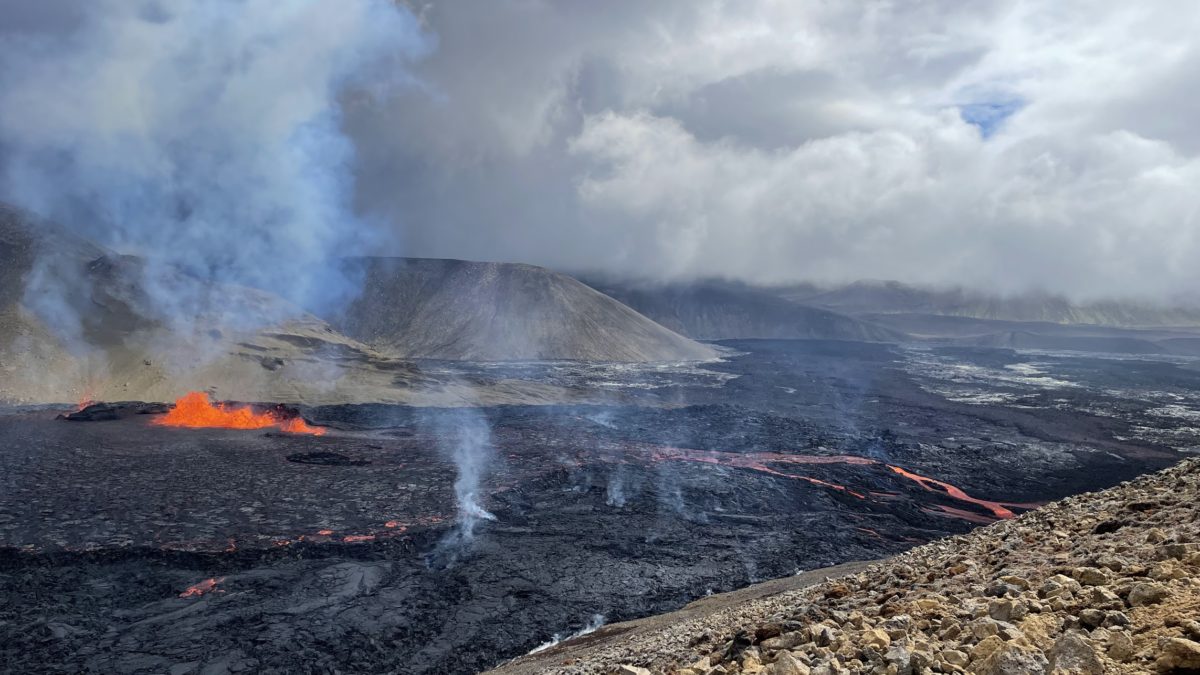Free and exclusive discount codes for hundreds of tours and & travel services in Iceland
Subscribe to instantly receive discount codes for tours, car rental, camper van rental, and outdoor clothing rental. Thank you! ❤️ Jon Heidar, Editor of Stuck in Iceland Travel MagazineOn the afternoon of August 3rd, the Fjardarsfjall volcano woke up again following an eruption last year. The eruption spewed streams of lava meters into the air, delighting all who saw it. As with the last eruption on the Reykjanes peninsula, it‘s occurring in a region that is not a threat to settlements, so it‘s possible to visit the site. Thousands of people have already visited the area, and it truly is a spectacular sight to behold. However, this is mother nature, not a theme park; you must make smart decisions to visit safely. The writer Jennie Gottlieb gives a few tips on how to safely visit the Icelandic volcano.
Make sure the site is open to visitors.
The paths to the volcano might be closed in unfavorable weather conditions. This is not to be ignored as it could be foggy, which could lead you to get lost. Also, as winter is on the horizon, there could be storms with high winds and snow in the not-so-distant future. Check the weather forecast here.
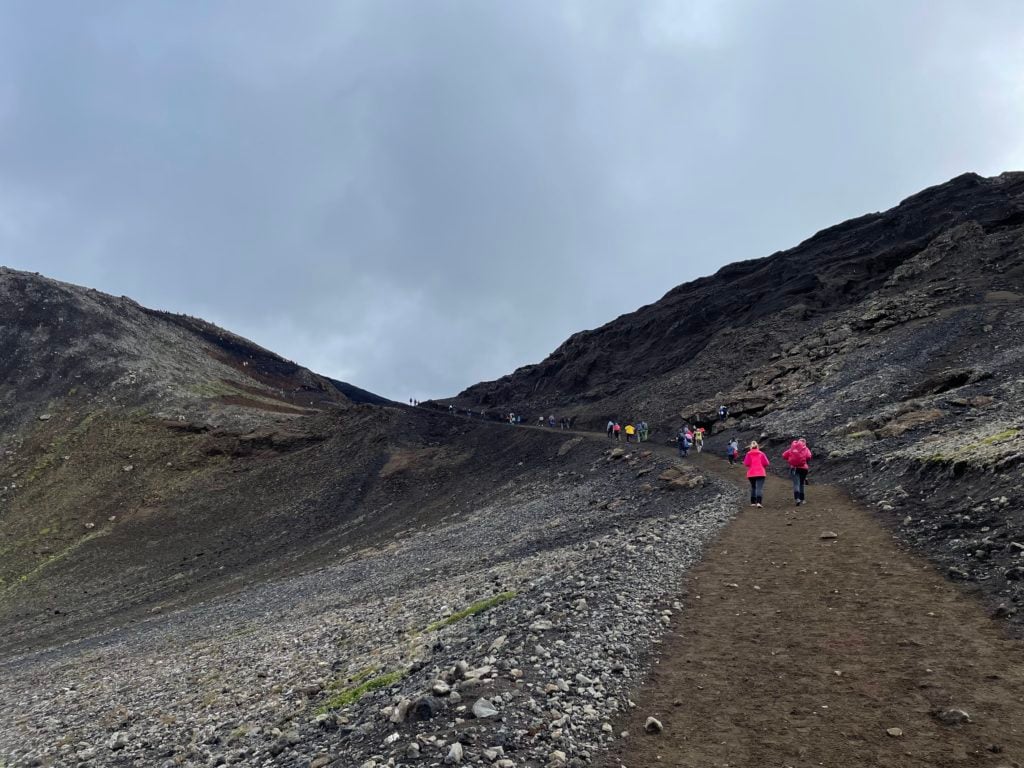
Dress the part, and have water and supplies
Make sure you have the proper clothing, footwear, and supplies needed for the multi-kilometer trek. Think layers and weatherproof outerwear, not jeans and hoodies. Also, it‘s crucial to have proper footwear as this isn‘t a walk in the park. Think hiking-ready shoes and not sandals or sneakers. You should have water and food that will last the duration of your visit, and make sure your mobile phone is charged. In the chance that you do get in trouble, the emergency number is 112.
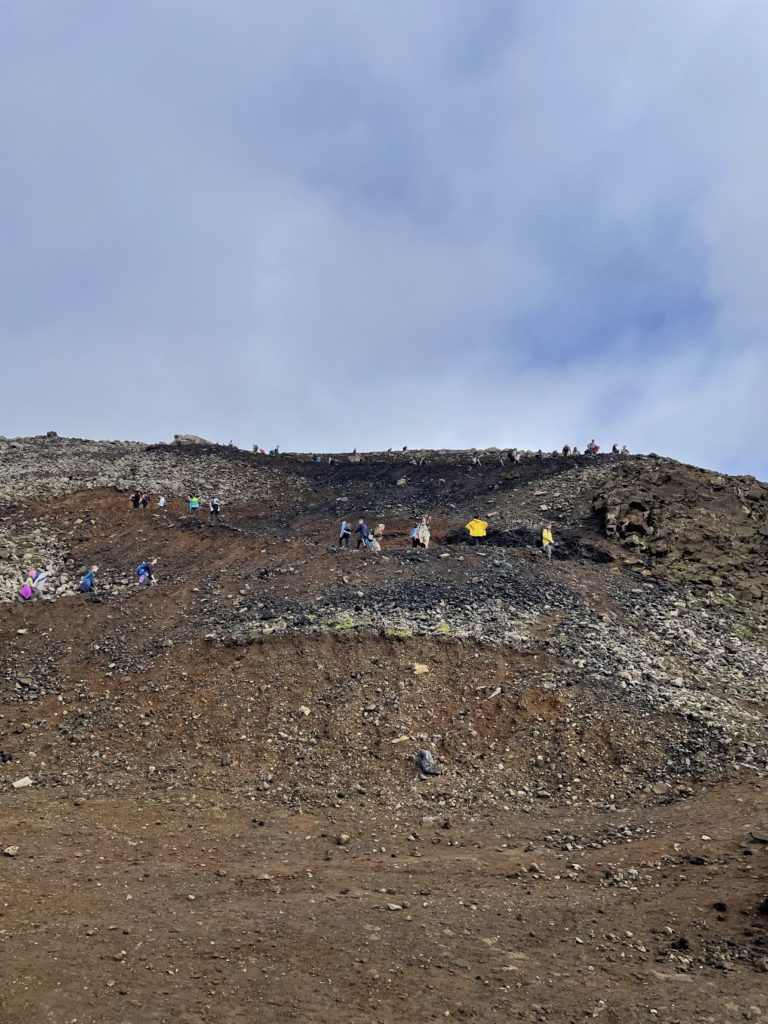
Consider your physical fitness
This is not an easy hike for most people as the terrain is rough and rocky, and there are steep hills to climb. If you are not confident in your fitness, don‘t chance it on your own. You could still book helicopter tours to see the eruption.
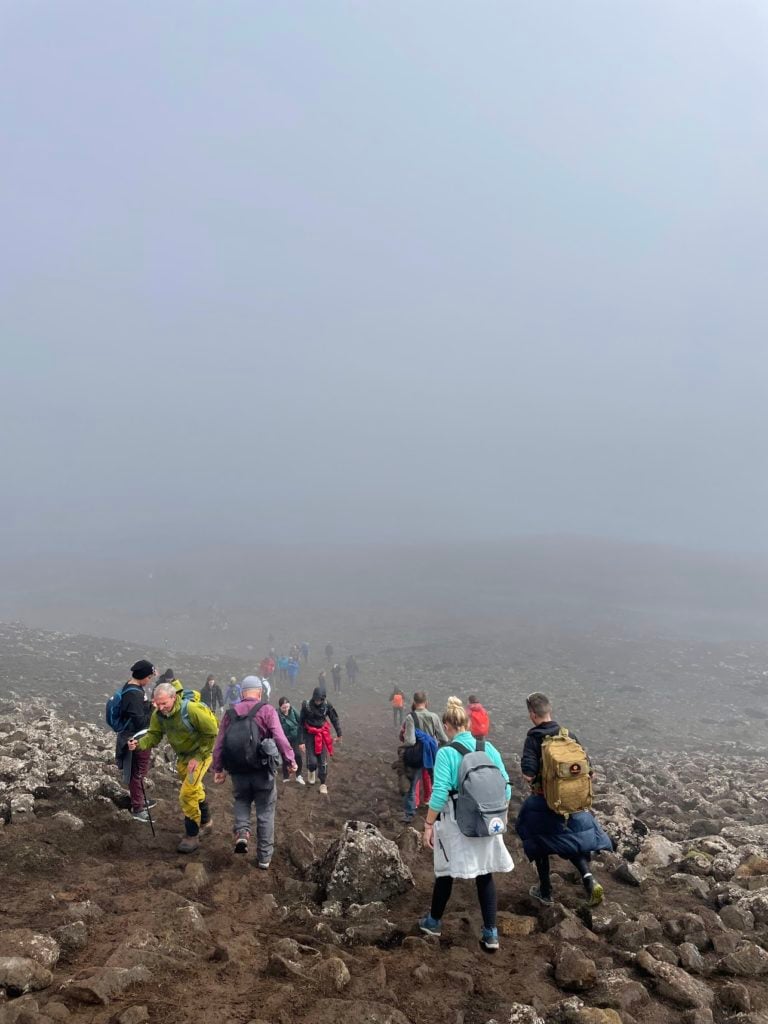
Pick your path, it is key to safely visit the Icelandic volcano
There are currently three paths to the volcano.
Path A to the Meradalir eruption is about 6-8 km one way or about 2.5-3 hours of hiking. The distance depends on where you can park your car and how much hiking you do when reaching the eruption site.
Path B is more challenging than path A and is 3.3 km one way. It was an alternative route to the eruption site but is rarely used today, and it could be used if the wind is blowing volcanic gases over path A.
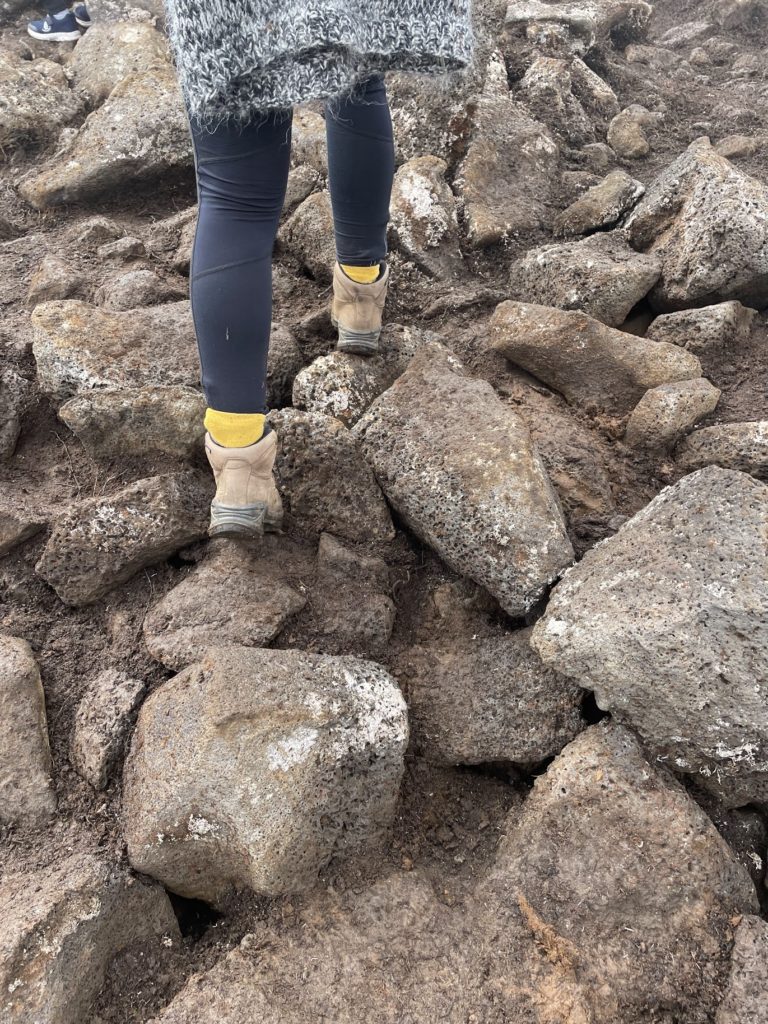
Path C by Langihryggur is about 4 km one way to a viewing point of the eruption. Keep in mind that the eruption can only be viewed from a distance as the new lava is running between you and the crater.
Path C by Nátthagi is roughly 2 km one way and is a much shorter and more leisurely hike; from there, you can see newly formed lava but not the crater, as this path only takes you to the edge of the lava field.
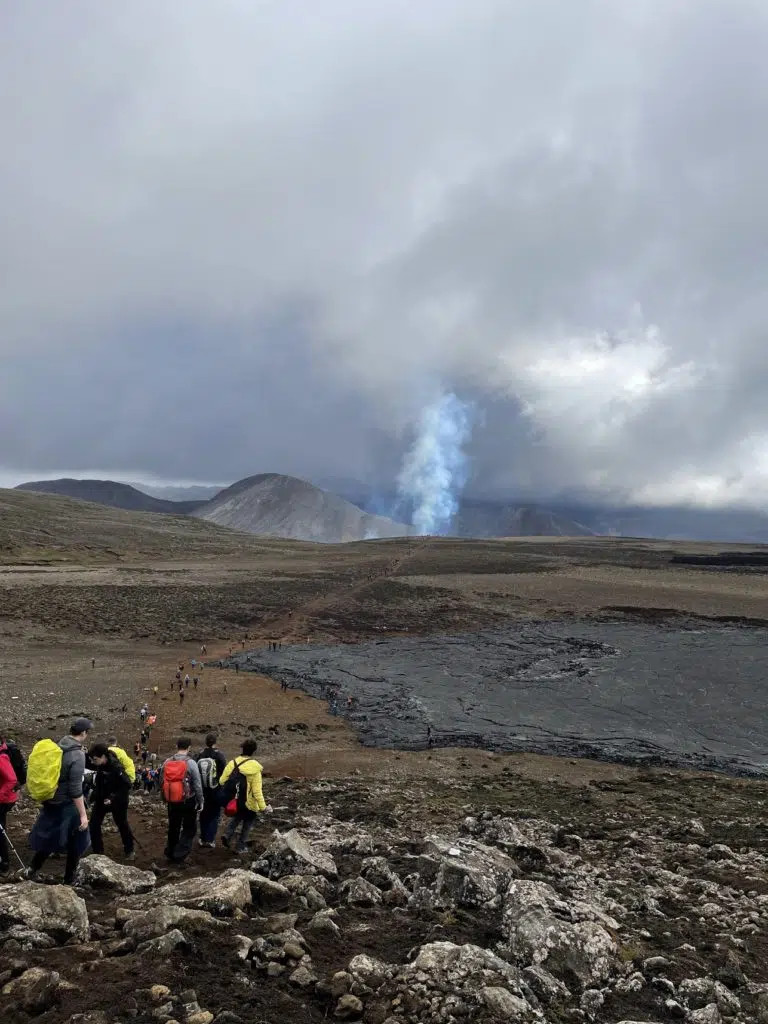
Park in the right place and pay for parking
You must leave your car in a marked parking lot, not on the side of the road. Here is a map of the parking area for the eruption site in Meradalir. Even though this is a natural disaster, the land the volcano is erupting on is owned by someone, as most land in Iceland is privately owned. There is a fee to park your car (1.000ISK or roughly $8) while you hike to the volcano. This is where you pay for parking.
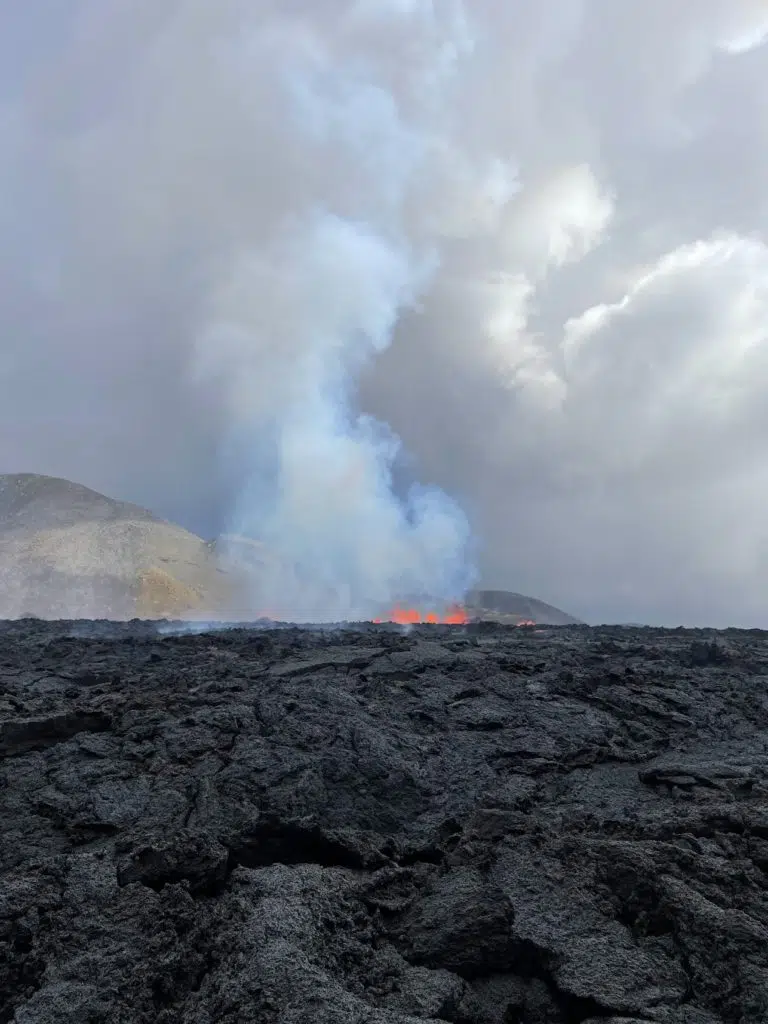
Watch out for noxious gases
Volcanic eruptions discharge poisonous gases. These fumes can be really harmful and they tend to accumulate just above ground. Do not linger in hollows close to the eruptions and have the wind at your back when you are viewing the eruption.
Don‘t walk on the lava
It‘s incredible that this needs to be said, but there have been cases of tourists walking on fresh lava that is hardened but still smoking. This is an active volcano, and it‘s erupting. Do not attempt to walk on lava.
Safely visit the Icelandic volcano and enjoy!
Most people don‘t get to see a volcano erupt, which is special; while you must take precautions and be safe, be sure to savor the moment. This remote rock in the north Atlantic we call Iceland is home to breathtaking nature, but seeing a volcano erupting…is really something else.


